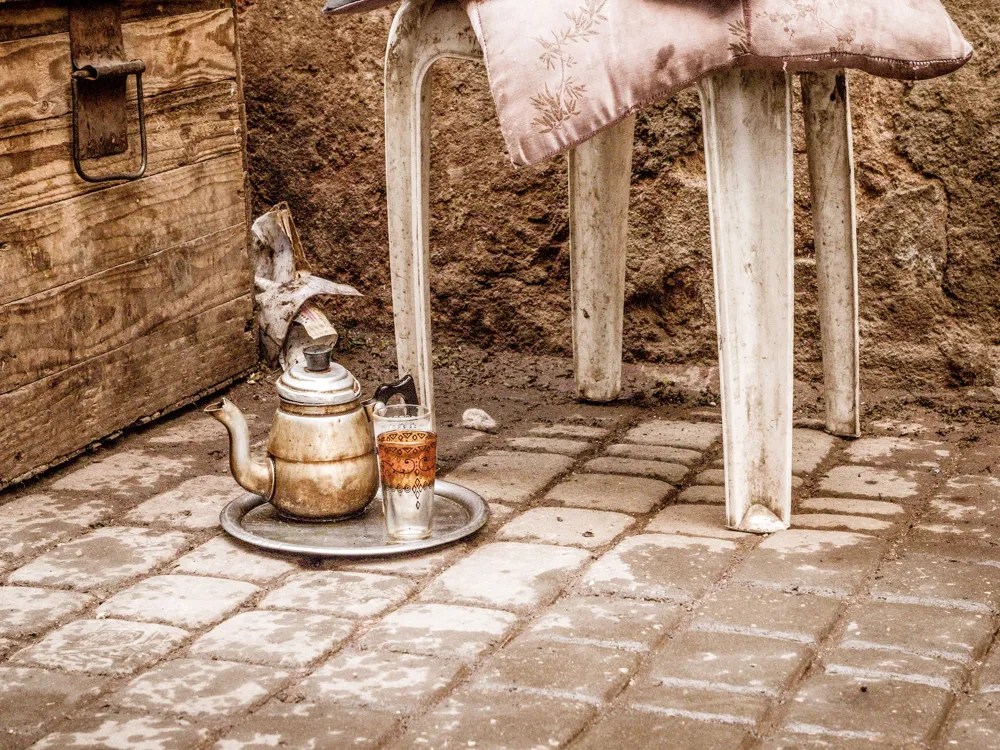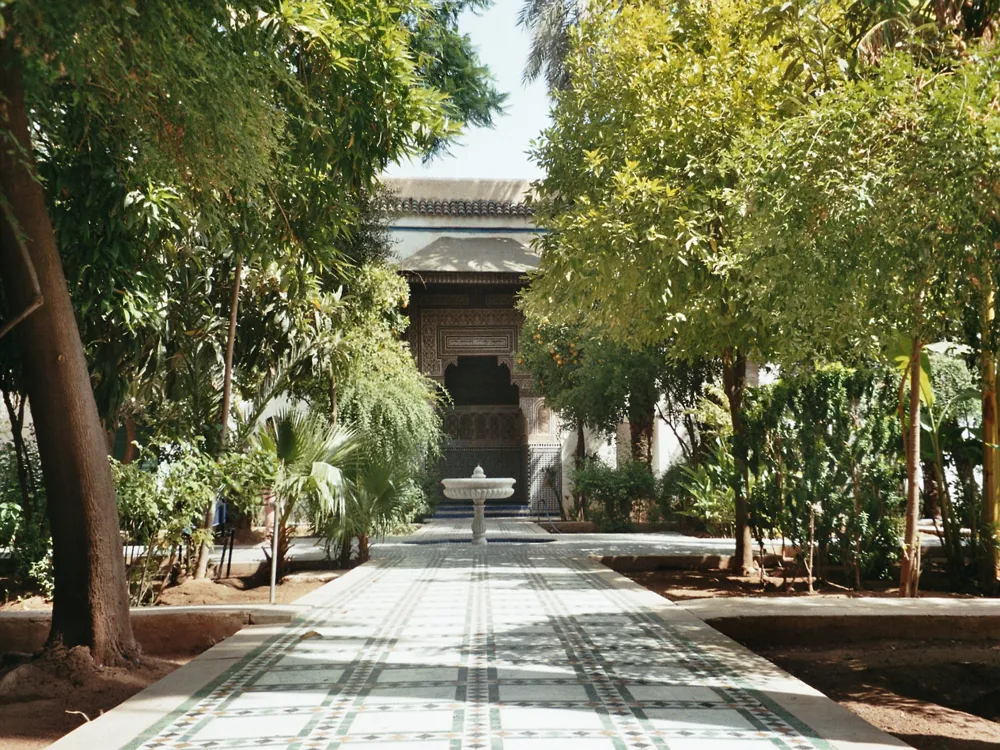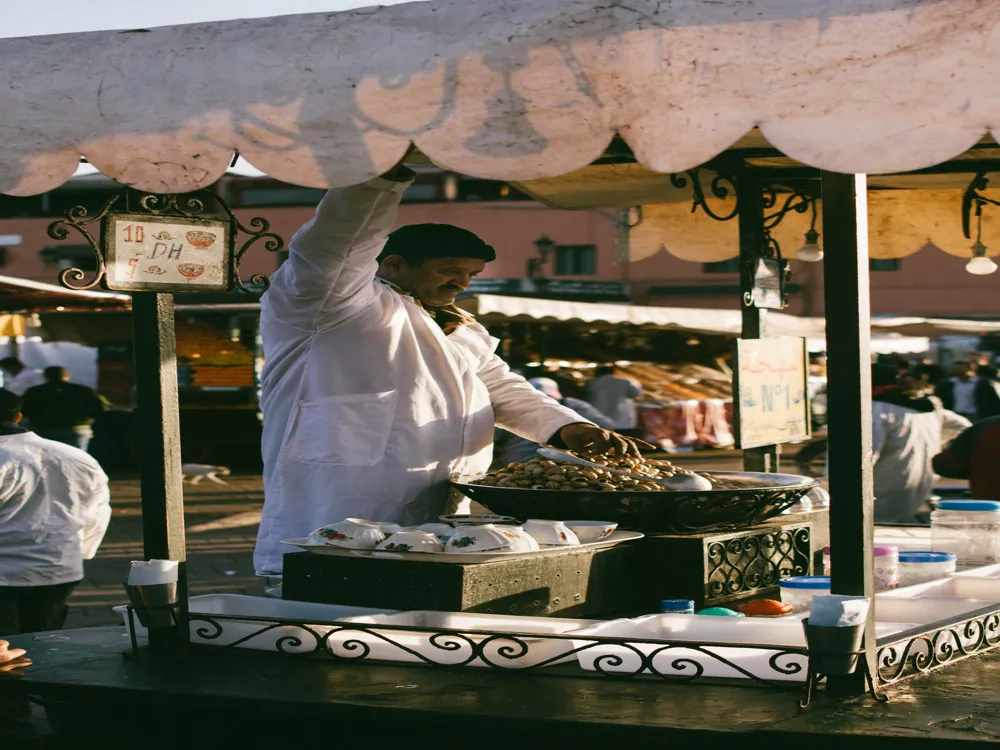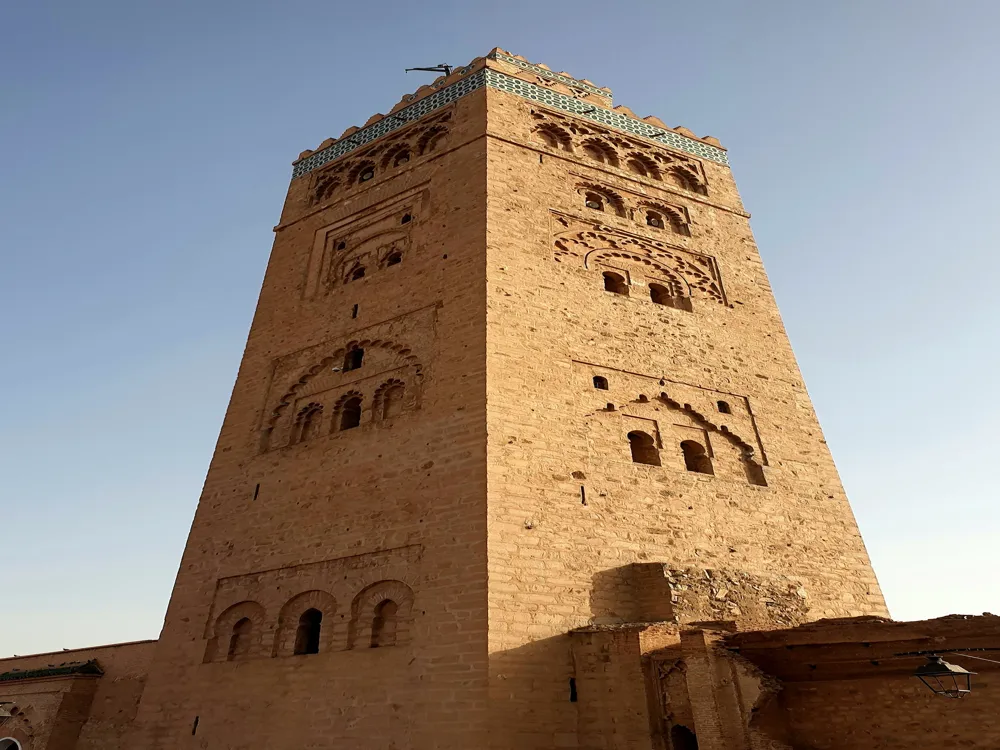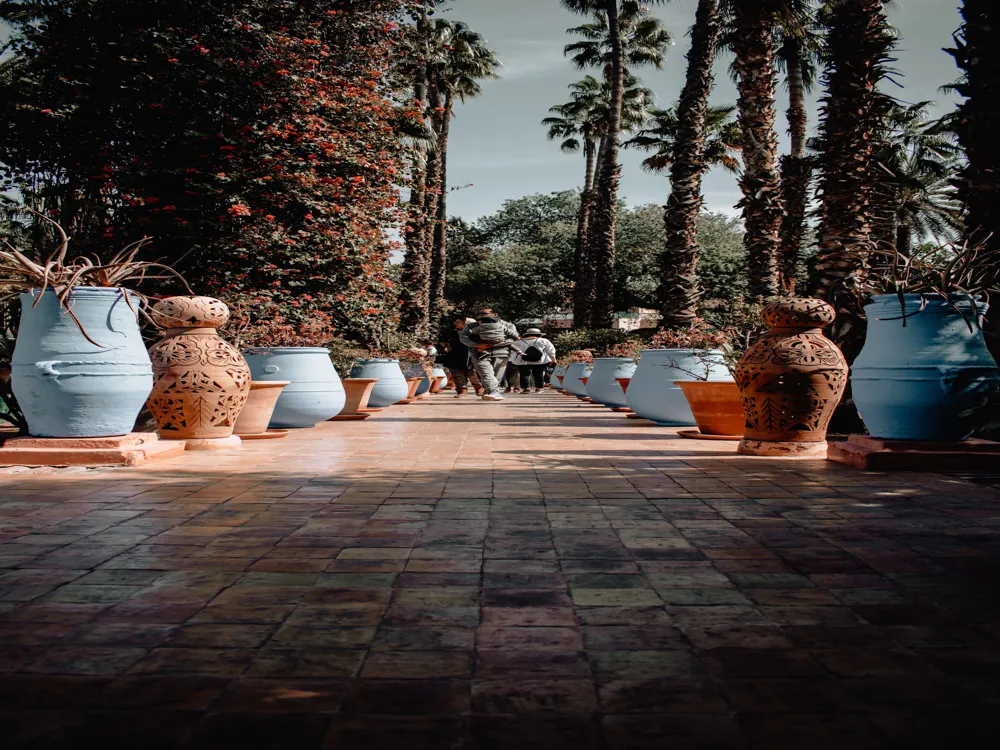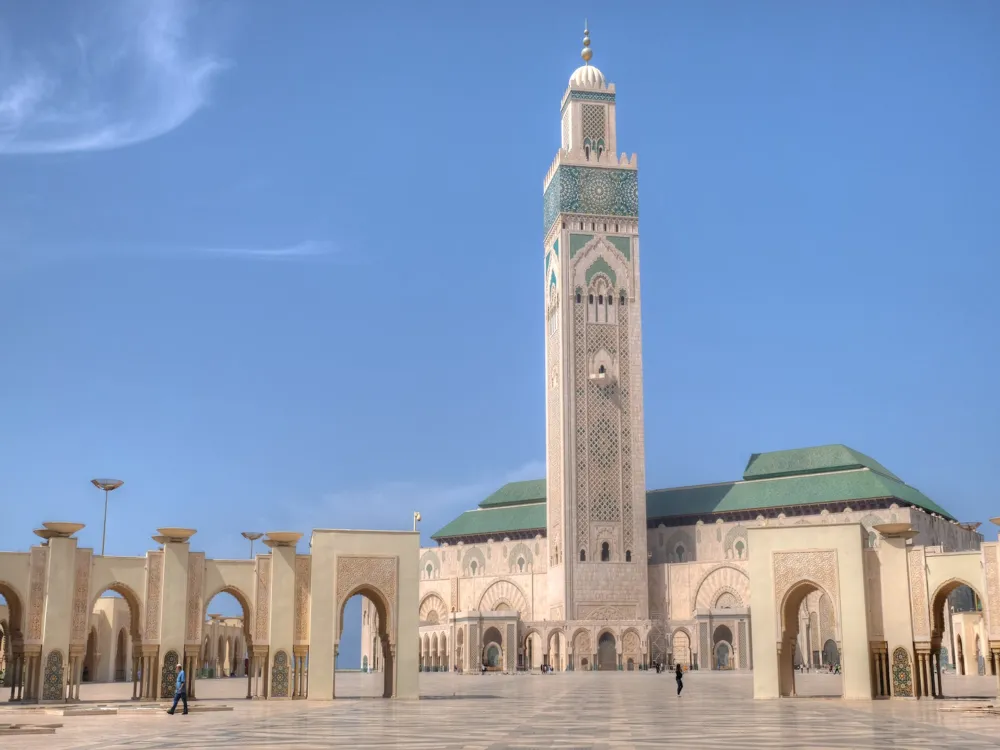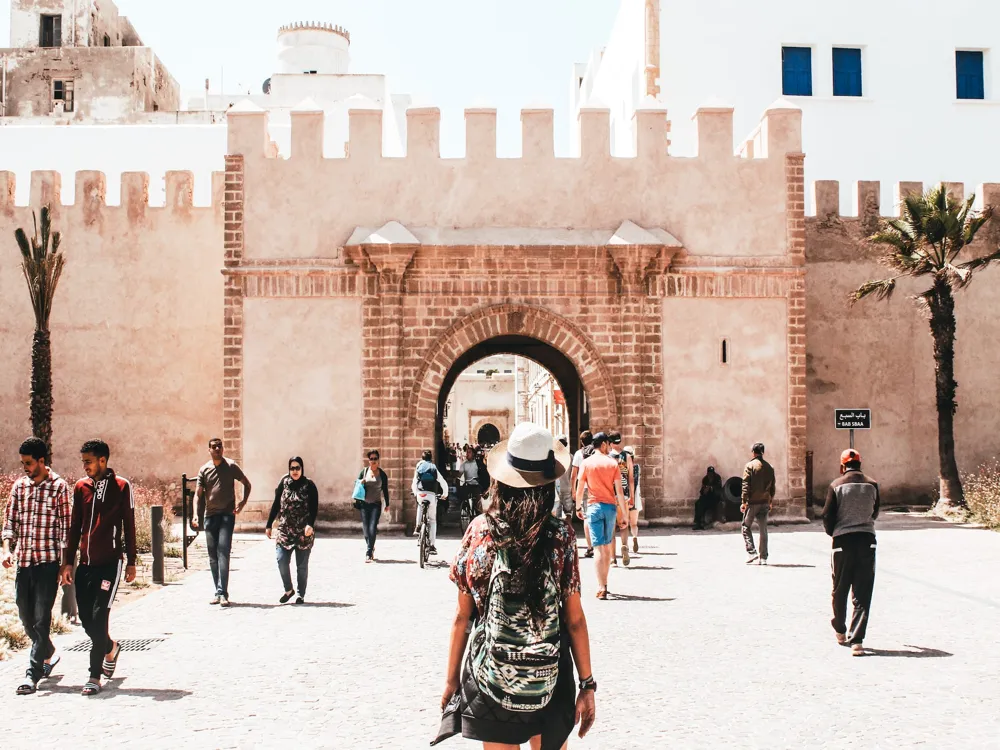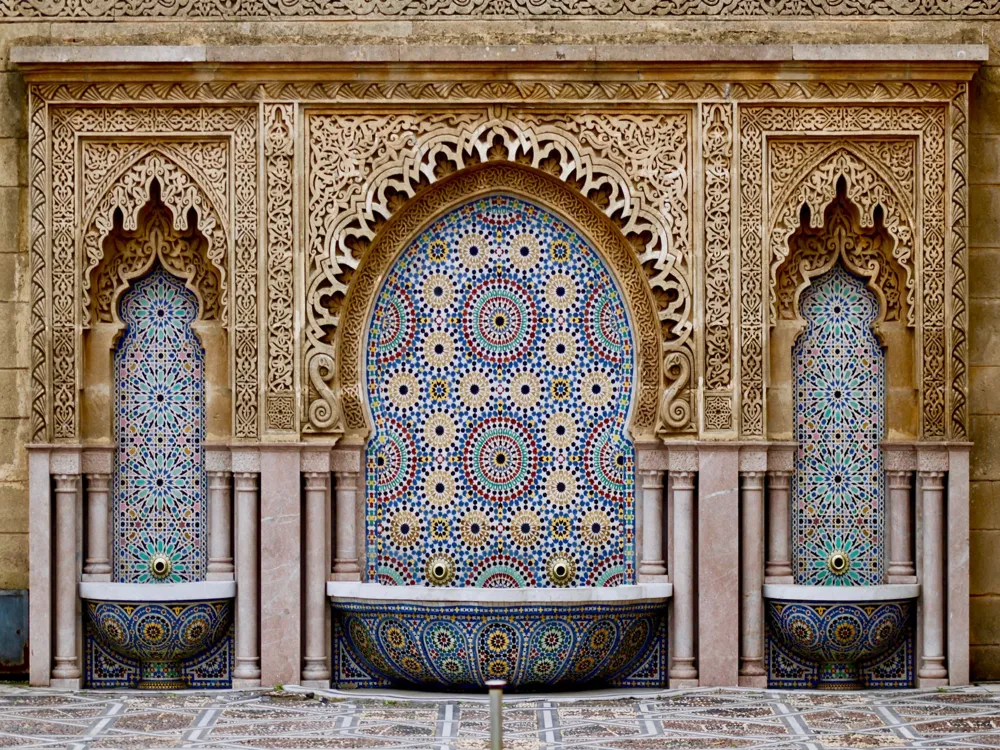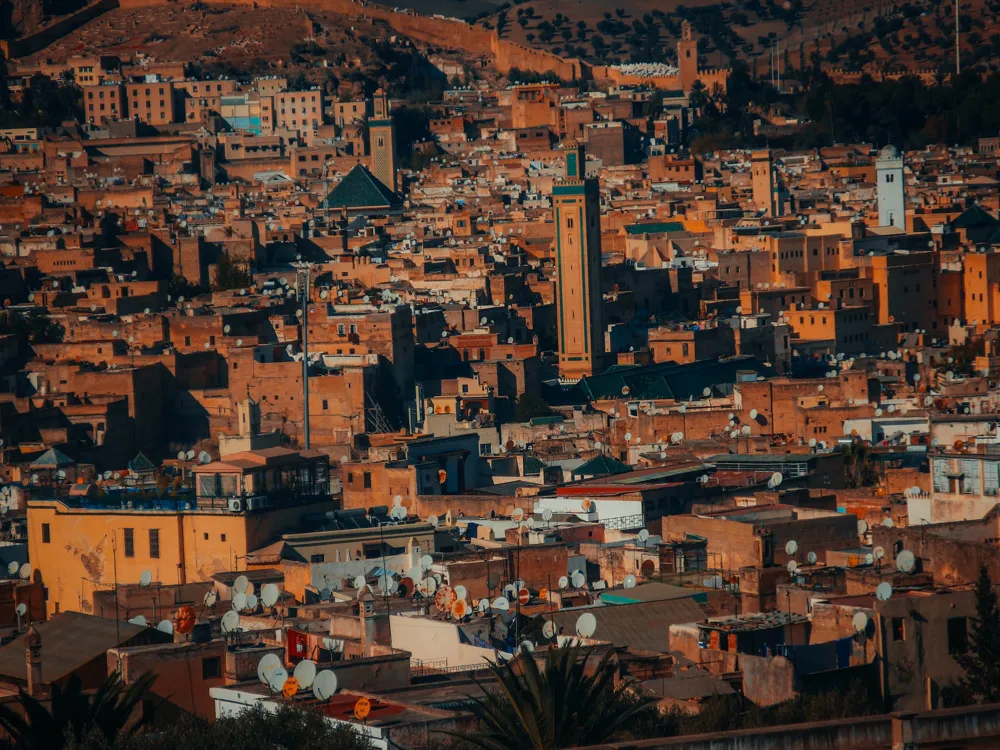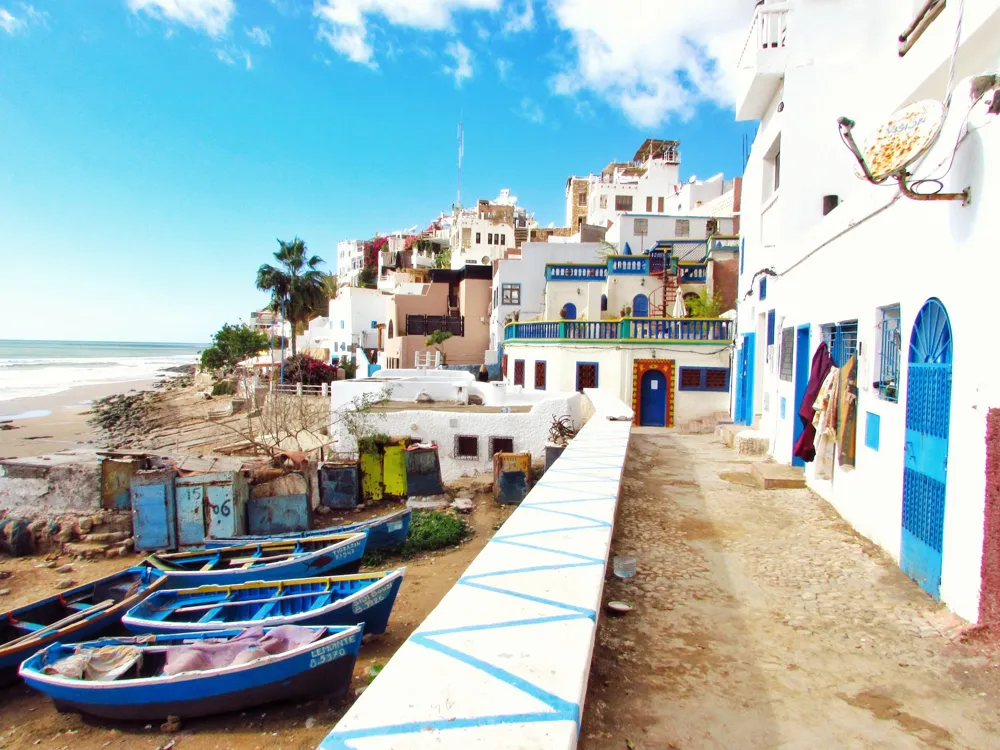The Tizi-N-Test Pass, located in the majestic Atlas Mountains of Morocco, offers a spectacular journey through one of the most scenic routes near Marrakech. This high mountain pass, reaching an elevation of 2,092 meters, is not just a route but a gateway to the rich cultural and natural heritage of Morocco. The drive through Tizi-N-Test exposes travelers to breathtaking landscapes, varying from arid plains to lush valleys, and provides a glimpse into the traditional Berber lifestyle, which has remained relatively unchanged for centuries. As you ascend the winding roads of Tizi-N-Test, the changing scenery is a feast for the eyes. The pass is famous for its dramatic vistas, including the panoramic view of the Sous Valley and the distant Anti-Atlas Mountains. The journey is dotted with small villages and hamlets, where the architecture is a harmonious blend of natural materials and traditional Berber design, giving travelers a sense of stepping back in time. The pass is not only a testament to the breathtaking beauty of Morocco's landscapes but also a witness to the resilience and ingenuity of its people. The history of Tizi-N-Test is as captivating as its landscapes. Historically, it has been an important trade route for the Berber tribes of the High Atlas. This pass has seen caravans loaded with precious commodities like gold, salt, and spices traversing its challenging terrain, connecting the Sahara with the northern cities of Morocco and beyond. Today, while the caravans have long ceased, the Tizi-N-Test Pass remains an essential link for local communities, providing them access to markets, schools, and health facilities. The Tizi-N-Test Pass is not just about the journey but also about the destination. The pass leads to several notable attractions, including the Tin Mal Mosque, a historical monument that stands as a testament to the Almohad dynasty's architectural ingenuity. The mosque is unique in that it is one of the two mosques in Morocco open to non-Muslims, allowing visitors to appreciate its architectural beauty and historical significance. The journey through Tizi-N-Test is a blend of natural beauty, cultural richness, and historical depth, making it a must-visit destination for any traveler to Morocco. The architecture in and around the Tizi-N-Test Pass is a vivid representation of the Berber culture and their adaptation to the rugged terrain of the Atlas Mountains. The buildings here are primarily constructed using locally sourced materials, such as stone, clay, and wood, which not only makes them sustainable but also helps them blend seamlessly with the natural surroundings. This architectural style is not just about aesthetics; it's a reflection of the Berber communities' deep understanding and respect for their environment. One of the most distinctive architectural features of the Tizi-N-Test region is the Kasbah, a type of fortress commonly found in this part of Morocco. Kasbahs are usually made of rammed earth and feature high walls and corner towers, which historically served as protection against invaders. Today, these structures stand as a symbol of the region's rich history and architectural heritage. The design of Kasbahs also takes into account the harsh mountain climate, with thick walls providing insulation against both the summer heat and winter cold. Apart from Kasbahs, the villages in the Tizi-N-Test region are characterized by their clustered homes, narrow winding streets, and flat-roofed houses. This clustering not only fosters a strong sense of community but also offers protection against the elements. The flat roofs serve a dual purpose; they are used for drying crops and as a space for social gatherings. The simplicity and functionality of this architectural style reflect the Berber communities' pragmatic approach to life. The Tin Mal Mosque, located near the Tizi-N-Test Pass, is an exemplary model of the Almohad architectural style. Built in the 12th century, it features a simple yet elegant design, with an emphasis on geometric patterns and minimal ornamentation. The mosque's prayer hall is supported by horseshoe arches, a distinctive feature of Islamic architecture. The use of natural light, through carefully placed windows, adds a spiritual dimension to the space. This mosque not only serves as a place of worship but also as a cultural landmark that embodies the architectural and historical legacy of the region. The ideal time to visit the Tizi-N-Test Pass is during the spring (April to June) or autumn (September to November) months. During these periods, the weather is more temperate, and the natural scenery is at its most vibrant. Winter months can be quite cold, and the pass might be closed due to snow. The road through Tizi-N-Test is narrow and winding, so it's essential to drive cautiously. It's advisable to use a vehicle with good ground clearance. Also, keep an eye out for local traffic, including livestock and pedestrians, as the road is used by the local communities. Respecting local customs and traditions is crucial. Dress modestly, especially when visiting rural areas and religious sites. Always ask for permission before taking photographs of local people or their property. The high altitude of the pass can cause altitude sickness. It's important to acclimatize gradually and stay hydrated throughout your journey. To reach the Tizi-N-Test Pass from Marrakech, you have several options. The most common way is by car, and the journey takes about 3 to 4 hours, depending on the conditions of the road and the weather. You can either rent a car or hire a taxi. There are also organized tours available from Marrakech that include a visit to the Tizi-N-Test Pass as part of a larger itinerary exploring the Atlas Mountains. For those seeking a more adventurous route, trekking or cycling to the pass is a viable option. This allows for a more intimate experience with the landscape and the local Berber culture. However, this requires a good level of fitness and proper planning, including hiring a local guide for navigation and safety purposes. Public transportation to the Tizi-N-Test Pass is limited, so it's less recommended for tourists. However, for those looking to immerse themselves in local life, buses do travel from Marrakech to villages near the pass. This option requires more time and flexibility, as bus schedules can be irregular and the journey longer. Read moreOverview of Tizi-N-Test Pass
Architecture of Tizi-N-Test Pass
Tips When Visiting Tizi-N-Test Pass
Best Time to Visit
Driving Tips
Local Customs and Etiquette
Staying Hydrated and Acclimatized
How To Reach Tizi-N-Test Pass
Marrakech Tourism
Best Time to Visit Marrakech
How to Reach Marrakech
Things To Do Marrakech
Tizi-N-Test Pass
Marrakech
₹ 89,000 onwards
View marrakech Packages
Weather :
Tags : Hills & Valleys
Timings : Anytime
Entry Fee : N/A
Planning a Trip? Ask Your Question
Marrakech Travel Packages
View All Packages For Marrakech
Top Hotel Collections for Marrakech

Private Pool

Luxury Hotels

5-Star Hotels

Pet Friendly
Top Hotels Near Marrakech
Other Top Ranking Places In Marrakech
View All Places To Visit In marrakech
View marrakech Packages
Weather :
Tags : Hills & Valleys
Timings : Anytime
Entry Fee : N/A
Planning a Trip? Ask Your Question
Marrakech Travel Packages
View All Packages For Marrakech
Top Hotel Collections for Marrakech

Private Pool

Luxury Hotels

5-Star Hotels

Pet Friendly







